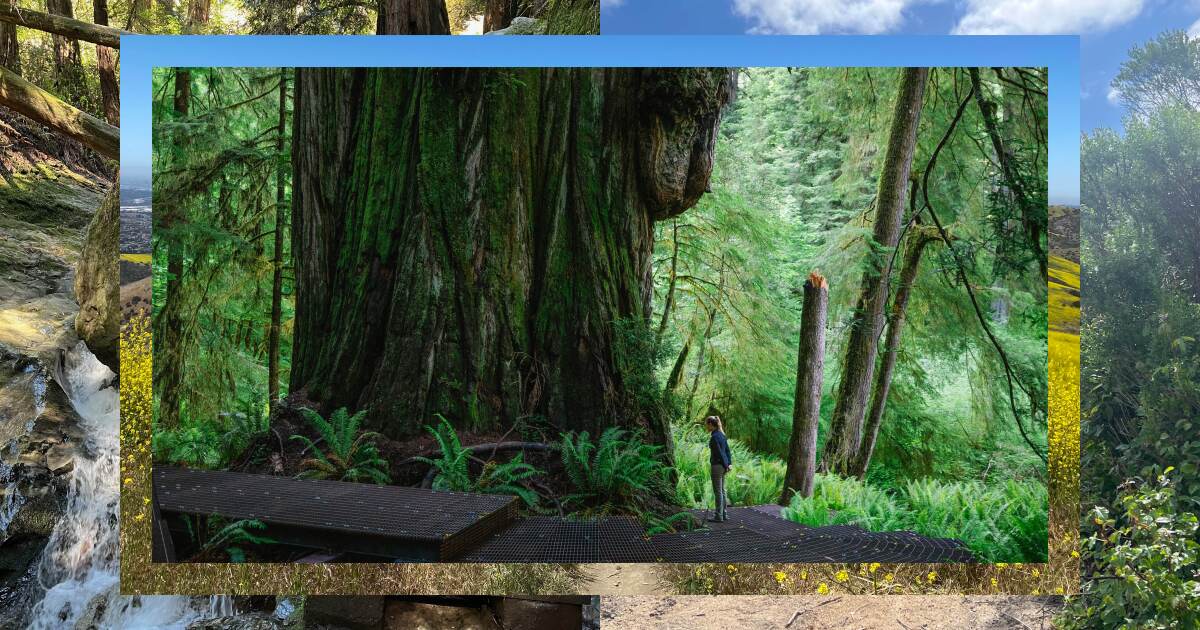Other states may have high mountains, vast deserts and scenic shorelines. California? It has a park system that contains all of it.
Ancient redwoods grow along the mist-covered edge of the continent. The alpine beauty of the Sierra Nevada towers above Emerald Bay and Sugar Pine Point state parks on the shores of world-famous Lake Tahoe. Thirty warm, sandy state beaches from San Diego to Santa Barbara beckon visitors from across the Southland and around the world.
The California state parks system — widely regarded as the nation’s finest — showcases a fabulous array of nature’s handiwork: giant sequoias in Calaveras Big Trees State Park; the rare Torrey Pines making a last stand in a natural reserve near San Diego; palm oases in Anza-Borrego Desert State Park; some of the tallest trees on Earth in Jedediah Smith Redwood State Park.
This multitude of intriguing environments, and the many fine paths that explore them, add up to some world-class hiking adventures.
I confess to being more than a little obsessed by California state parks and am likely the only one crazy enough to have hiked and written about all 280 of them. I love sharing my passion for them, but it’s often challenging to do because of the public’s poor name recognition of the parks. Over the last couple decades, I’ve asked several thousand Californians to “name five California State parks” and less than 5% can do so. Surprising to me, many of these baffled respondents are outdoorsy Californians, the kind of people who come to my talks or who I meet on the trail.
More than 100 parks offer great hikes — nature walks, family hikes, all-day adventures — on some 3,000 miles of trail. I’d love to share ‘em all with you, but let’s start out with 10 of my favorites — a representative and diverse sampling of parks from greater L.A. (Chino Hills State Park) to San Francisco Bay (Angel Island State Park), from the Gold Country (Malakoff Diggins State Historic Park) to the Wine Country (Sugarloaf Ridge State Park), from the bottom of the Central Valley (Great Valley Grasslands State Park) to the top of an alpine peak (Mt. San Jacinto State Park). If you want even more, check out my book “Hike California State Parks: A Day Hiker’s Guide.”
You’re sure to enjoy hiking in these parks — even if you’re like most Californians and can’t remember their names.
A few notes:
- State historic parks, state natural reserves, state recreation areas and state beaches are part of the system though we often refer to all 280 as “state parks.”
- Dogs are prohibited on state park trails.
- Entry fees vary. Typical day-use parking cost is $10, though it will cost you more at popular beach parks. At remote parks and from many trailheads, parking and entry is free.
- You can find detailed visitor information, including updates about closures and travel delays, at the official California State Parks website. To learn ways to protect and preserve the California state park system, visit the California State Parks Foundation.
